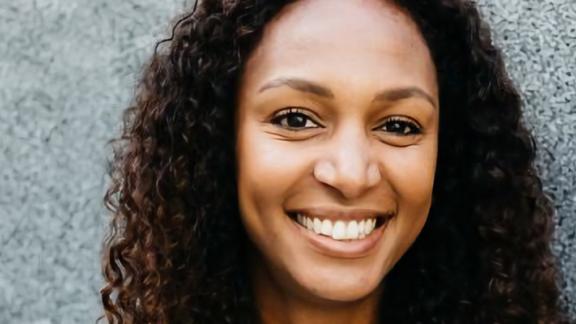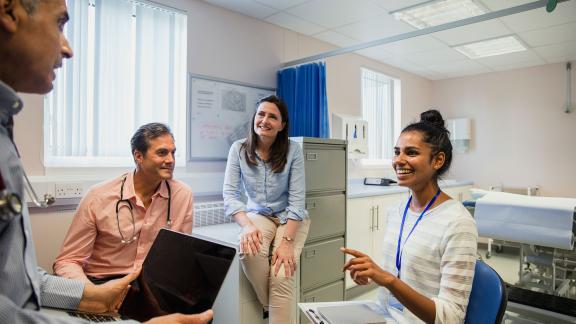Increasing vaccine uptake: lessons for future success

The Strategy Unit's Abeda Mulla considers three key lessons, following analysis of 50 initiatives aimed at seldom heard and underserved communities across England.
It’s a cruel irony that the very same communities that have been disproportionately impacted by the COVID-19 pandemic have also seen a lower uptake of vaccines. This is due to a host of reasons, which included poorer access to vaccination sites and mistrust in healthcare services.
On the plus side, concerns about low vaccination levels have provided a positive impetus for community action to increase uptake. Over the last few months, the Strategy Unit has been working on behalf of the Health Inequalities Improvement Team at NHS England and NHS Improvement, to gather information on these type of community initiatives across England.
A novel approach
This week we published 50 examples of community initiatives on our website, and a few of these are also on the NHS England website. Many of the examples we identified were working with minority ethnic groups, faith-based communities, people with temporary or unstable accommodation and people whose health status put them more at risk. The initiatives can loosely be categorised into two types:
- Providing better vaccine information: not just to the communities being served but also to the health and care professionals serving those communities. Tackling people’s fears and concerns is as important for staff as it is for patients.
- Taking the vaccine to the people: accessible vaccination sites, corresponding to the community being targeted, such as places of worship for faith groups, or quiet GP practices with longer appointment times for people with learning disabilities, can overcome attendance hesitancy.
Targeting faith-based communities specifically is a fairly novel approach in immunisation drives, which reflects the developing understanding of communities gained in the pandemic: they may be different in myriad ways but still have things in common. For instance, a Somali community and Bangladeshi community living side by side have neither ethnicity, culture nor a language in common, but given their shared religious beliefs (Islam), community efforts that begin from a faith-based perspective can be readily adapted. Faith-based interventions are likely to need prioritising; recent analysis from the Office of National Statistics show that Muslims are the least likely of all faith groups to be vaccinated.
Three key lessons
We’ve drawn out three key lessons from the initiatives we studied, which should be taken on board by all those working with communities to improve their health:
1. Communities can do it for themselves – but need sustained support to encourage and empower them further.
Many successful initiatives start with people from the community themselves, including those with an at-risk health condition. Their experiences and insight meant that they recognised the emerging issues around vaccine uptake and took action in an individual capacity or worked with like-minded others. Investment in local initiatives, such as through Community Champions funding, has supported the emergence of much-needed community activity which requires sustaining for future benefit.
2. Health and care professionals are a powerful mechanism to connect with communities – but as yet, the richness and diversity of the workforce is untapped.
There appears to be a step-change in how health and care professionals have supported their communities to improve vaccine uptake, in part because the local workforce are residents themselves of the communities they are supporting. These health professionals have known what to do without any guidelines telling them how to do so. They are more aware of the different and intersectional concerns of culture, faith, gender or age, and have devised ways of sensitively addressing those. We believe this community workforce have a stronger role to play to tackle health inequalities more generally for their communities.
3. Focusing on improving access to health and care services is a good start – but insufficient on its own.
A recurring theme across the initiatives is that, irrespective of the community and the intervention type, attempting to increase vaccine uptake by making the vaccine more accessible is not enough. Conversations to tackle misinformation need to happen at the same time. With a new national focus on health inequalities, there is renewed interest in improving population health outcomes for other health conditions such as cardiovascular disease and diabetes, where there are unequal health outcomes. To do this successfully, we need to acknowledge and address existing mistrust of health services in some communities, which is wrapped up in experiences of discrimination in all its forms.
As the national vaccination programme continues, everyone involved – communities and healthcare professionals alike – should be applauded for their determination to address inequalities. Their emotional labour and altruism are admirable. Their joint efforts provide hope that one consequence of the pandemic will be more resilient communities, supported by health and care organisations that are determined to improve the health of all their populations, equitably.
Abeda Mulla is managing consultant at Strategy Unit, NHS Midlands and Lancashire CSU. Follow the organisation on Twitter @StrategyUnit



